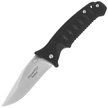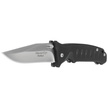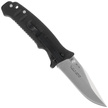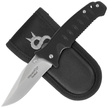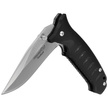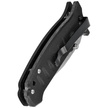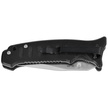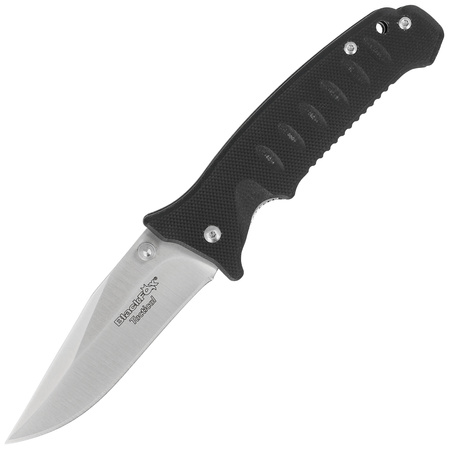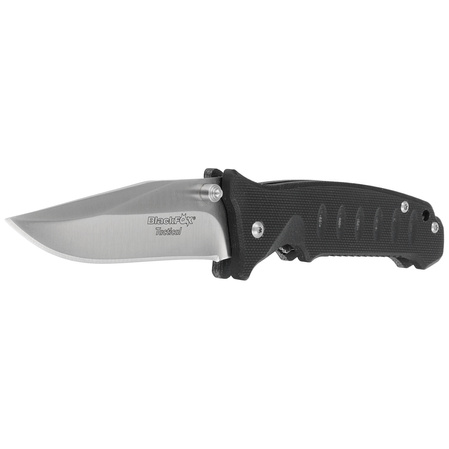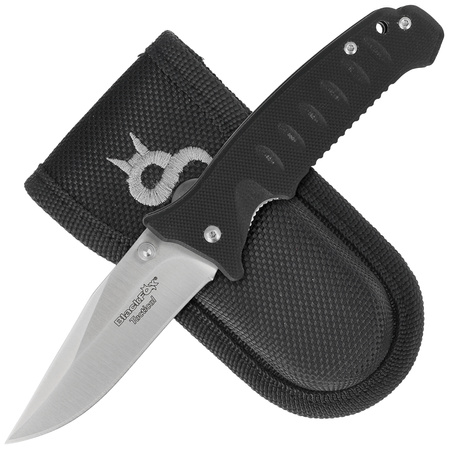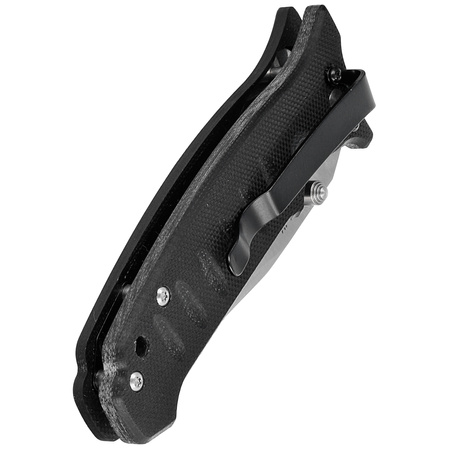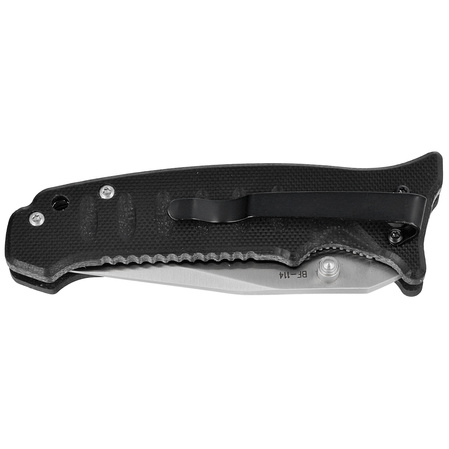BlackFox Tactical Knives with Assisted Opening System (BF-114)
- BF-114 semi-automatic tactical knife by BlackFox. Equipped with the Assisted Opening System, it opens with a slight push of the head. Low weight, spring assisted opening, G10 handle, case and excellent price are the strong points of the folder
BF-114, semi-automatic tactical knife from the Italian brand BlackFox. Equipped with the patented Assisted Opening System (U.S. PAT. No. 6.959.494), it assists opening by slightly pushing the blade out. Low weight, spring assisted opening of blade, G-10 handle, case and excellent price are strong advantages of the BF-114 T knife.
Blade - Clip Point profile coated with a glare eliminating matt TC (Titanium Coated) coating. Made of 440A stainless steel, hardened in the range of 55-57 HRC, holding sharpness well. Plain blade with Hollow Grind for good cutting properties. The Thumb Stud on both sides and the accelerator allow the blade to be opened even when gloved. Robust Liner-Lock.
Handle - covered with textured non-slip G-10 plastic liners (durable, resistant to high and low temperatures and chemicals). Open construction of the handle (facings connected by steel sleeves) allows for easy cleaning and maintenance. Cut-outs in the covers facilitate intuitive access to the Thumb Stud and blade lock. A metal right-side clip allows the knife to be carried in tip-down position. In the rear part of the handle lanyard hole, a hole for paracord cord.
Case - made of waterproof 1000D nylon in black with manufacturer's logo. Fastened with a Prym-type clasp. The scabbard has a belt or equipment mount allowing to carry the knife in vertical or horizontal position.
Technical data:
Product number: BF-114T
Type of steel: 440A
Blade length: 75.0 mm / 2.95"
Blade thickness: 3.0 mm / 0.12"
Overall length: 170.0 mm / 6.69"
Weight: 85.0 g / 3.00 oz
Cutting edge type: Plain (smooth)
Blade type: Clip Point
Handle material: G10 Black
Case: 1000D nylon
Clip: Right, Tip-Down
Manufacturer: Fox Cutlery, Italy
Przeczytaj!
This product is intended for use only by adults with knowledge and experience in handling sharp cutting tools. Improper use of the knife can result in serious injuries. The blade is extremely sharp and can easily cut through skin and tissue; therefore, extra caution should always be exercised while cutting, and hands should be kept away from the cutting edge. To prevent the knife from slipping, it is recommended to cut on a stable, non-slip surface and avoid excessive force, which may cause uncontrolled blade movement.
Leaving the knife on the edge of a table, countertop, or in easily accessible places—especially where children are present—poses a significant safety risk. The knife should always be properly secured after use, ideally by placing it on a stable surface or storing it in designated knife blocks, protective sheaths, or magnetic strips. The knife should never be used for tasks it is not designed for, such as opening cans or prying objects, as this can damage the tool and lead to dangerous accidents.
A dull blade increases the risk of injury, as it requires more force and is more likely to slip from the material being cut. Therefore, it is essential to sharpen the knife regularly to maintain optimal sharpness. Additionally, proper cleaning and drying of the knife are necessary to prevent corrosion and bacterial growth. Periodic inspection of the handle and blade is recommended to check for cracks, chips, or looseness. If any damage is detected, the knife should be repaired or replaced immediately.
When using the knife, focus solely on the task at hand—avoid talking on the phone, watching television, or other distractions while cutting. Ensure proper lighting in the workspace for better visibility and control. Please note that some countries or regions have laws restricting the ownership and carrying of knives. Before purchasing or using this knife, verify that its use is legal in your location according to applicable regulations.
Following these safety guidelines will help ensure safe and effective knife use, minimizing the risk of accidents and extending the lifespan of the tool.

